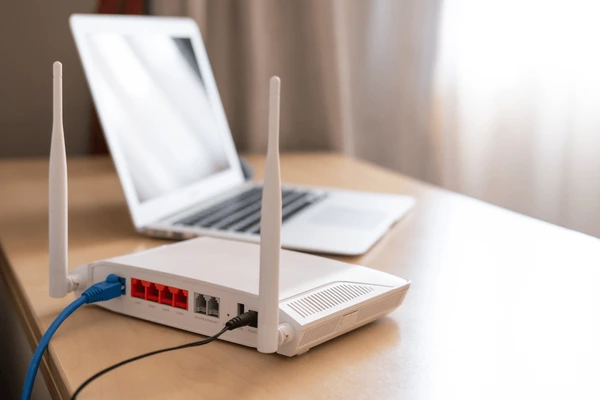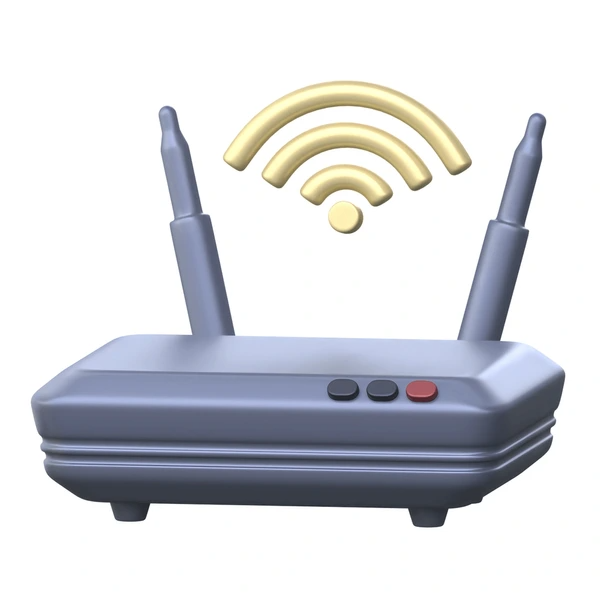
Introduction: How to Extend WiFi Range
Struggling with weak WiFi signals and dead zones? Knowing how to extend WiFi range can transform your home or office network into a seamless, connected environment. Whether it’s for streaming, gaming, or working remotely, learning how to extend WiFi range is essential for uninterrupted internet access. This guide will show you practical tips and tools to eliminate connectivity issues and ensure your entire space is covered.

Tips to Extend WiFi Range
Hardware Solutions
- Use a WiFi Range Extender/Repeater: A WiFi range extender or repeater can amplify and rebroadcast your existing WiFi signal to areas with poor coverage. It receives the signal from your router and retransmits it, effectively increasing the range.
- Upgrade to a Long-Range Router: Some routers are designed with high-powered radios and external antennas to provide extended range and coverage. Replacing your existing router with a long-range model can significantly boost your WiFi signal strength and reach.
- Use a WiFi Antenna: Adding a high-gain directional antenna to your router or access point can focus the WiFi signal in a specific direction, increasing the range in that area.
Software/Configuration Solutions
- Adjust Router Position and Antenna Orientation: Placing your router in a central location and adjusting the antenna orientation can optimize signal distribution and minimize obstructions.
- Update Router Firmware: Router manufacturers often release firmware updates that can improve performance, range, and stability. Keeping your router’s firmware up-to-date can help extend its effective range.
- Change WiFi Channel: If you’re experiencing interference from neighboring networks, changing the WiFi channel on your router can reduce congestion and improve signal strength. Use a WiFi analyzer app to find the least crowded channel.
Environmental Considerations
- Minimize Obstructions: Walls, floors, and large objects can significantly attenuate WiFi signals. Minimizing obstructions between your router and devices can improve range.
- Use WiFi Repeaters or Mesh Systems: For large homes or buildings, a mesh WiFi system with multiple nodes or strategically placed repeaters can provide seamless coverage and extended range.
Hardware Solutions
WiFi Range Extension Hardware
- WiFi Extenders/Repeaters: These devices receive the existing wireless signal, amplify it, and rebroadcast it to extend the coverage area. They are a simple and cost-effective solution for eliminating dead zones.
- Outdoor WiFi Access Points: Weatherproof access points with high-gain antennas can be installed outdoors to provide extended coverage for outdoor areas.
- Wireless Mesh Networks: A mesh network uses multiple nodes (access points) that communicate with each other to create a seamless, self-healing WiFi network with extended range.
Wireless Network Optimization
- Antenna Upgrades: Replacing the stock antennas on routers/access points with high-gain directional antennas can significantly improve signal strength and range.
- Wireless Bridges: These devices connect wired networks to wireless networks, allowing devices without WiFi capability to access the wireless network from a distance.
- Wireless Distribution System (WDS): WDS enables the wireless interconnection of multiple access points, effectively extending the range by creating a single, unified network.
Emerging Technologies
- WiFi 6 (802.11ax): The latest WiFi standard offers improved range and coverage through technologies like OFDMA and MU-MIMO, enabling more efficient use of the wireless spectrum.
- WiFi over NLOS (Non-Line-of-Sight): Techniques like beamforming and mesh networking allow WiFi signals to propagate around obstacles, extending coverage in complex environments.
- Drone-based WiFi Hotspots: Drones equipped with WiFi access points can be deployed to provide temporary wireless coverage in remote or emergency situations.
Advanced Network Configurations
- Prioritizing mesh network traffic over non-mesh devices to avoid harmful interference and improve capacity utilization.
- Setting Network Allocation Vector durations in transmission requests to control mesh device channel occupancy and boost overall data rates.
- Coverage enhancement methods like uplink parameter adaptation based on terminal coverage level to improve uplink signal reception.
- Hierarchical addressing and routing architectures to facilitate mobility handling and network configuration in heterogeneous environments.

Upgrading Your Hardware
Wireless Network Extenders
A common solution to extend WiFi range is using wireless network extenders or repeaters. These devices receive the existing wireless signal, amplify it, and rebroadcast it to areas with poor or no coverage. Network extenders can connect to the main access point via wired (e.g. Ethernet, coaxial cable) or wireless connections. They can support a subset or all frequency bands of the main router, enabling multi-band coverage extension.
Mesh Networking
Wireless mesh networks utilize multiple nodes to relay data and extend coverage. By prioritizing mesh traffic over non-mesh devices, interference can be minimized, improving network capacity utilization. Mesh architectures with distributed systems enhance flexibility, optimize data transmission, and improve resource utilization for extended range applications.
Advanced Wireless Technologies
Emerging wireless standards like IEEE 802.11ax (Wi-Fi 6) incorporate features like uplink multi-user MIMO and OFDMA to boost performance and range. Techniques like appending extra codebits to original data and transmitting over multiple subcarriers can enhance range and reliability. Additionally, monitoring narrowband signals enables cross-band transmissions to extend device communication range.
Innovative Hardware Solutions
Novel hardware approaches have been proposed, such as integrating wireless access points into outdoor light fixtures or using drones as mobile Wi-Fi hotspots. These solutions can provide internet connectivity in areas without existing wireless coverage, overcoming range limitations through innovative deployments.

DIY and Budget-Friendly Tips
Wireless Network Extensibility and Enhancement
A key approach is to leverage existing wireless network clients (WNCs) like mobile phones and laptops to extend and enhance wireless coverage via peer-to-peer sub-networks. Each WNC operates as a Service Access Node (SAN) to other clients, providing:
- Peer-to-peer communication capabilities to connect with wireless clients
- Gateway functionality to aggregate data traffic over its uplink
This allows wireless clients to “piggyback” their data link onto the WNC. A Peer Control Manager (PCM) software on each WNC controls its service functions under an overarching Peer Controller entity.
Drone-based Wireless Signal Extenders
Drones equipped with wireless signal extenders can dynamically extend coverage areas based on user device locations. The key steps are:
- Track user device positions
- Predict device movements out of existing coverage
- Instruct drones to move to optimal positions to provide extended coverage
This approach leverages mobility and positioning to proactively extend wireless signals for roaming devices.
Wireless Repeaters and Range Extenders
Simple and cost-effective solutions involve using off-the-shelf wireless repeaters or range extenders. These devices receive the existing wireless signal, amplify it, and rebroadcast to areas with poor coverage. Key benefits include ease of setup and low cost compared to installing new access points.
Antenna Upgrades and Positioning
Upgrading antennas on wireless routers/access points can significantly boost range and signal strength. Proper positioning of wireless devices away from obstructions is also crucial. Homemade high-gain antennas like WiFi guns or Cantenna designs allow extending range at very low cost.
Conclusion: Maximizing Your WiFi Coverage
Improving your WiFi range doesn’t have to be complicated. From repositioning your router to investing in mesh systems or extenders, there’s a solution for every setup and budget. Evaluate your needs, implement these tips, and enjoy seamless internet coverage across your space.
FAQs
- How far can WiFi reach?
Standard routers typically cover 100-150 feet indoors and up to 300 feet outdoors. This varies based on obstacles and frequency bands. - Are WiFi extenders worth it?
Yes, extenders are a cost-effective way to boost signals in specific areas without replacing your router. - What is the best placement for a router?
Place it centrally, elevated, and away from walls or electronic interference for optimal coverage. - Can mesh systems replace routers?
Yes, mesh systems often replace traditional routers and offer superior coverage for large homes. - How does WiFi 6 improve range and performance?
WiFi 6 introduces better signal efficiency, faster speeds, and improved handling of multiple devices, enhancing range and performance.
To get detailed scientific explanations of how to extend wifi range, try Patsnap Eureka.

